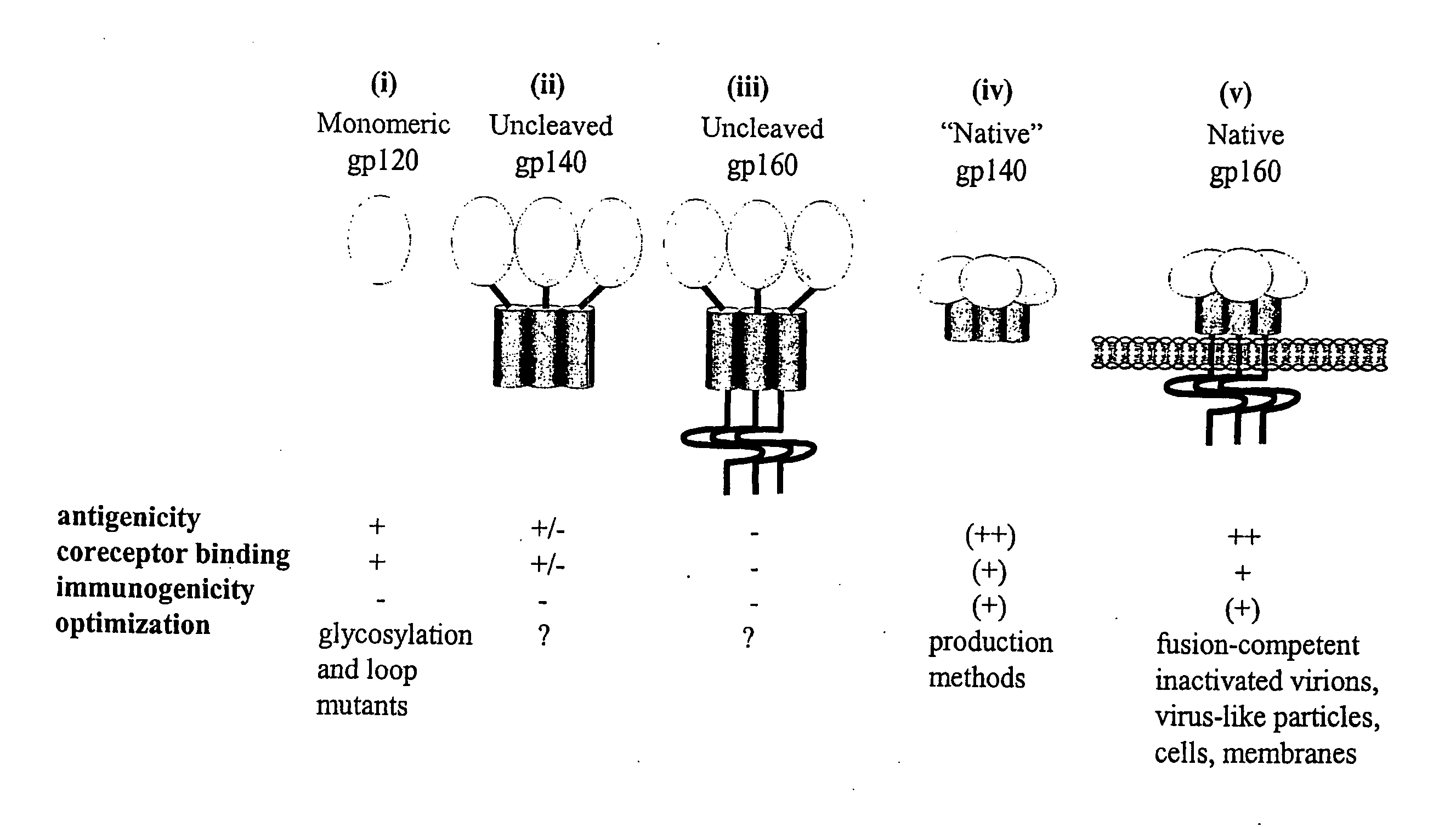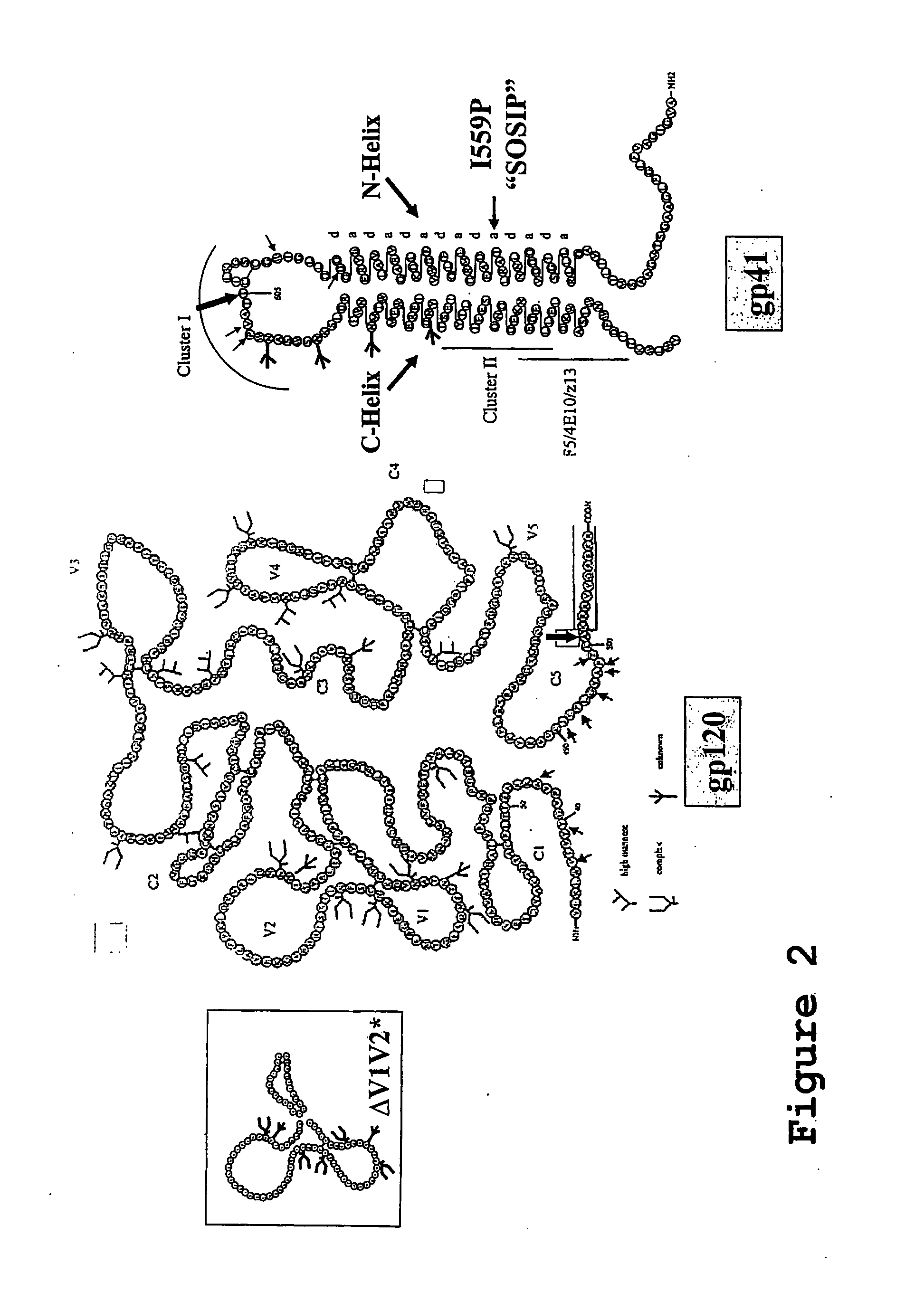Hiv-1 Neutralizing Antibodies Elicited By Trimeric Hiv-1 Envelope Glycoprotein Complex
- Summary
- Abstract
- Description
- Claims
- Application Information
AI Technical Summary
Benefits of technology
Problems solved by technology
Method used
Image
Examples
Embodiment Construction
Definitions
[0079]As used in this application, except as otherwise expressly provided herein, each of the following terms shall have the meaning set forth below.
[0080]The following standard abbreviations are used throughout the specification to indicate specific amino acids: A=ala=alanine; R=arg=arginine; N=asn=asparagine; D=asp=aspartic acid; C=cys=cysteine; Q=gln=glutamine; E=glu=glutamic acid; G=gly=glycine; H=his=histidine; I=ile=isoleucine; L=leu=leucine; K=lys=lysine; M=met=methionine; F=phe=phenylalanine; P=pro=proline; S=ser=serine; T=thr=threonine; W=trp=tryptophan; Y=tyr=tyrosine; V=val=valine; B=asx=asparagine or aspartic acid; Z=glx=glutamine or glutamic acid.
[0081]An “adjuvant” shall mean any agent suitable for enhancing the immunogenicity of an antigen. Numerous adjuvants, including particulate adjuvants, suitable for use with both protein- and nucleic acid-based vaccines, and methods of combining adjuvants with antigens, are well known to those skilled in the art.
[0082...
PUM
| Property | Measurement | Unit |
|---|---|---|
| Volume | aaaaa | aaaaa |
| Volume | aaaaa | aaaaa |
| Volume | aaaaa | aaaaa |
Abstract
Description
Claims
Application Information
 Login to View More
Login to View More - R&D
- Intellectual Property
- Life Sciences
- Materials
- Tech Scout
- Unparalleled Data Quality
- Higher Quality Content
- 60% Fewer Hallucinations
Browse by: Latest US Patents, China's latest patents, Technical Efficacy Thesaurus, Application Domain, Technology Topic, Popular Technical Reports.
© 2025 PatSnap. All rights reserved.Legal|Privacy policy|Modern Slavery Act Transparency Statement|Sitemap|About US| Contact US: help@patsnap.com



